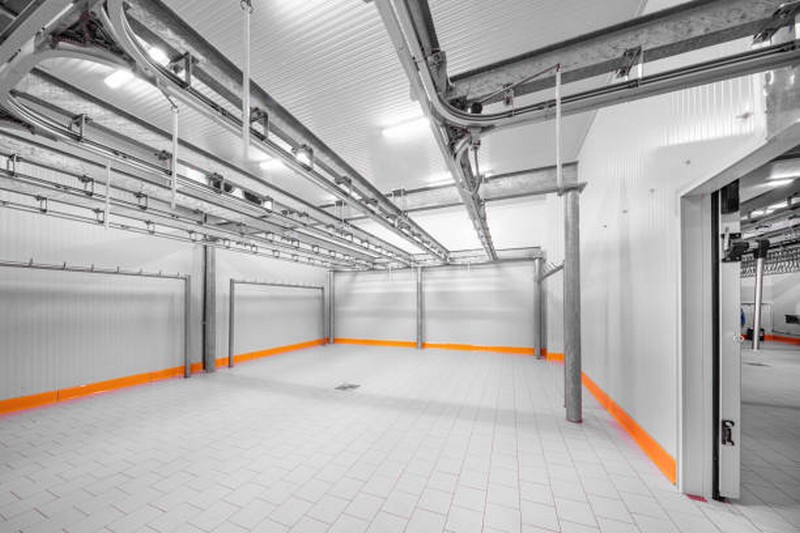Cold rooms are essential in industrial operations, especially for enterprises that need precise temperature control for the storage of perishable items. However, the energy consumption required to sustain these critical temperatures may be large, resulting in high operating costs and a significant environmental effect. As the worldwide focus on sustainability and efficiency grows, finding energy-saving solutions for industrial cold rooms has become a top goal for companies looking to decrease their carbon footprint while minimizing operating expenses. This article delves into novel tactics and technology that pave the way for more energy-efficient industrial cold rooms.
Understanding Energy Demand
Industrial cold rooms are energy-intensive by definition, need continual electricity to sustain the low temperatures required for product integrity. This continual cooling need not only consumes a lot of power, but it also harms the environment by emitting greenhouse gases. As a result, deploying energy-saving solutions is more than simply a cost-cutting strategy; it’s a step toward environmental responsibility.
Cutting-Edge Energy-Saving Solutions
- High-Performance Insulation: One of the most effective ways to reduce energy consumption is by enhancing the thermal insulation of cold rooms. Advanced insulation materials with higher R-values provide better thermal resistance, minimizing the exchange of heat between the cold room and its surroundings. This reduces the workload on cooling systems, leading to lower energy use.
- Smart Refrigeration Systems: Modern refrigeration systems equipped with variable speed drives (VSDs) can adjust their operation based on the actual cooling demand, rather than running at full capacity continuously. This adaptability ensures energy is not wasted on unnecessary cooling, significantly improving efficiency.
- LED Lighting: Replacing traditional lighting with LED lights in cold rooms can lead to substantial energy savings. LEDs emit less heat, reducing the cooling system’s load, and consume significantly less energy, slashing electricity costs and extending bulb life.
- Energy Management Systems (EMS): Implementing an EMS allows for the continuous monitoring and optimization of energy consumption within cold rooms. These systems can identify inefficiencies, automate temperature controls, and provide actionable insights to further reduce energy usage.
- Automatic Doors and Air Curtains: Minimizing the amount of warm air that enters the cold room is crucial for maintaining low temperatures. Automatic doors reduce the time that doors remain open, while air curtains create a barrier that helps keep warm air out when doors are in use.
- Heat Recovery Systems: Capturing the waste heat generated by refrigeration systems and repurposing it for other needs, such as heating office spaces or water, can significantly improve overall energy efficiency.
- Solar Power Integration: For facilities with suitable infrastructure, integrating solar power as a renewable energy source to run cold room operations can dramatically reduce reliance on the grid and lower carbon emissions.
- Routine Maintenance: Regular maintenance of refrigeration systems, including cleaning coils and seals, ensuring proper insulation, and checking for leaks, can prevent energy wastage and extend the lifespan of the equipment.
- Optimal Layout and Design: Strategically designing the layout of cold rooms to promote efficient airflow and reduce cooling dead zones can also contribute to energy savings. Ensuring that stored goods do not obstruct air circulation is key to maintaining uniform temperatures.
- Sustainable Refrigerants: Transitioning to refrigerants with a lower Global Warming Potential (GWP) can mitigate the environmental impact of cold room operations. Newer refrigerants are designed to be more energy-efficient and have a reduced effect on global warming.
Implementing Energy-saving Measures
Implementing these energy-saving measures requires a planned strategy. Businesses should undertake energy audits to identify specific areas for improvement and select activities based on potential effect and ROI. Collaboration with energy efficiency specialists, as well as investment in employee training, may help to guarantee that energy-saving measures are efficiently implemented and maintained.
Benefits Beyond Cost Savings
While the major motive for energy-saving solutions in industrial cold rooms may be to lower operating costs, the advantages go much beyond that. Businesses that reduce their energy use help to combat climate change by minimizing their carbon footprint and promoting global sustainability. Furthermore, employing energy-efficient methods may help a company’s image by appealing to environmentally concerned customers and stakeholders.
The transition to energy-efficient industrial cold rooms is both a need and an opportunity for enterprises to comply with contemporary sustainability principles while streamlining their operations. Companies that embrace new technology and techniques may save considerable amounts of energy, minimize their environmental impact, and pave the path for a cooler, more sustainable future. As the sector evolves, a dedication to energy efficiency will surely become a defining characteristic of forward-thinking firms globally.

